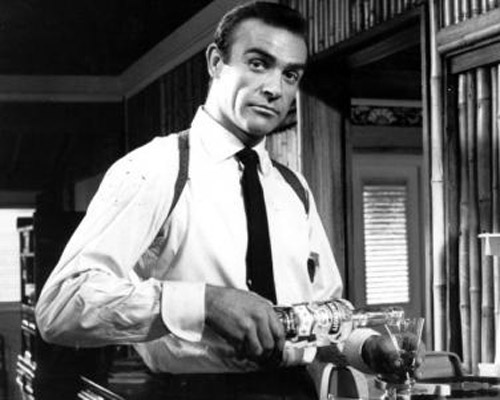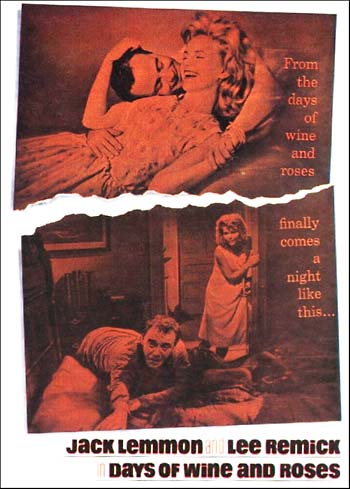
By Kerry, Lauren, Matt and Nicole
Let’s look at the statistics: “Research found alcohol use depicted in 92 percent of the films in a sample of 601 contemporary movies… Alcohol was used in 52 percent of G-rated films, 89 percent for PG, 93 percent for PG-13 and 95 percent for R”
The stone-cold-sober fact? Alcohol is everywhere in films and it shapes the consumption of alcohol by viewers. A 2008 study concluded that each year the average US adolescent (ages 10-14) was exposed to “5.6 hours of movie alcohol use and 243.8 alcohol brand appearances in the top 100 US box office films from 1998-2002.”
Beyond exposure, the magnetism of a drinking character can influence viewers. “Health educators and policymakers are alerted to the fact that the entertainment media too often portray glamorous characters as enjoying alcoholic beverages without facing negative consequences, which may particularly affect the viewers who feel attracted to the role characters.”
Hollywood cinema can be magical, with scenes that seduce the viewer and tattoo memory to mind. These mystical moments generally glamorize alcohol. Drinkers are frequently depicted in films as more attractive, more aggressive, more romantically/sexually active, and as having a higher socioeconomic status than nondrinkers.
In contrast, Hollywood alcoholics are regularly depicted as hopeless, broken deadbeats, chugging down whiskey while their lives crumble around them. Thus, the movie industry portrays the two polar extremes of alcohol use – glamorized celebration and desolate disease. There is no middle ground.
This skewed representation of alcohol has an influence upon viewers, creating faulty perceptions of alcohol’s role in reality. For example in the movie Casablanca, the seductive scenery of the saloon sets the stage for what becomes an exciting, passionate ‘champagne drenched’ courtship.
Overturning Prohibition
Alcohol has been prevalent in films since the movie industry first grew in popularity in the early 20th century. The fact that “movies were the most popular and influential medium of culture in the United States” even played a large role in the 1933 decision to repeal the national Prohibition Act of 1919 (Robin Room, 1988, p.11).
Before the Prohibition Act, movies had become an alternative option for entertainment that steered customers away from the saloons. At this time, movies were often connected with temperance, as liquor was almost always presented negatively in films. However, the perception of alcohol in the cinema would change to the positive side in the following decade.
In the 1920s movie popularity soared, with attendance doubling in its final five years. In 1926, due to Prohibition pressure, film regulators actually attempted to restrict the prevalence of alcohol in movies unless its use was absolutely necessary for the progression of the plot. Clearly, this initiative did not prove successful. “A study of 115 films released in 1929-1931 found that 43% of them showed intoxication, 66% showed drinking, and less than 10% had no reference to or display of liquor” (Robin Room, 1988, p.14). Of these references to alcohol in films, most were in a favorable light, as alcohol use was frequently portrayed as funny or characteristic of the heroes or heroines of the movies.

The years of the Prohibition helped promote the glamorization of alcohol use. In the cinema, parties were portrayed as luxurious affairs of higher society, with alcohol as a necessary staple. Drinking in itself became symbolic in this era, as it represented a mode of liberation from the strict binds that government held over individual freedom. Along with this desire for liberation and rebellion, the Jazz Era greatly impacted the use of alcohol and drugs. Many performers and artists felt that the use of substances could improve their creativity when it comes to producing music. Popular artists such as Thomas “Fats” Waller even played for Al Capone the Prohibition gangster.
This sense of release and liberation were especially pertinent to women, as alcohol directly connected to their sexuality. In the 1929 film Modern Maidens, “sips of champagne on a gondola serve to motivate a woman’s successful seduction of her best friend’s fiancé” (Robin Room, 1988, p. 15). Linked to high society, popular music, and women’s sexuality, alcohol became fashionable in movies in the first half of the 20th century.
Alcoholism in Film
“Shot by shot, frame by frame, drink by drink, Hollywood has, for over half a century, presented drinking as a normal part of what ordinary and sophisticated people do when they engage in sociable behavior.” (Hollywood Shot by Shot: Alcoholism in American Cinema, p. xiii). Yet for each of these social drinkers there is always the deviant one, be that sad or laughable. Despite the frequent glamorization of drinking in cinema, there is always the other side.
The cinematic alcoholic drinker’s decline is charted until he or she gets sober, dies, or is laughed off screen. Films concerning alcoholism speak to contemporary life, shaping the alcoholic as diseased, sick and insane. These films influence how people view alcoholism and recovery as well as the family model of an alcoholic family.
A study by Elizabeth C. Hirschman and Joyce A. McGriff from 1995 researched recovering addicts’ responses to a more grave and serious portrayal of alcoholism and addiction in films. The researches showed thirty-five addicts of three different residential rehabilitation centers the four following films: Days of Wine and Roses, Clean and Sober, Drugstore Cowboy, and Jungle Fever.

In general, the addicts reported that while the films were still often exaggerated, showing worst-case scenario addictions, they felt that they could often relate to specific experiences that the fictional characters faced during their struggle from rock bottom to recovery. Some of the films highlighted the importance of Alcoholics Anonymous and Narcotics Anonymous, giving the recovering addicts hope and encouraging them to remain clean. Thus, in the case of the portrayal of the disease of alcoholism in movies, cinema seems to have a positive, constructive influence on modern society.
At the same time, such stereotypical displays of alcoholism in films may help to reinforce extreme views of alcoholics. As Caroline Knapp writes in her memoir, Drinking: A Love Story, “Alcoholic is a nasty word… the classic image of the falling-down booze-hound: an older person, usually male, staggering down the street and clutching a brown paper bag. A pathetic image hopeless and depraved… (12-13)” This classic image was entirely different from her own experiences as an alcoholic, a generalization that did not capture the reality of heavy drinking that ran through her family and her friends.
Herein lies the irony of alcohol in films: cinema vastly differs in its portrayal of the drinking of alcohol versus alcoholism. The first is associated with excitement, pleasure, and enjoyment while the second is dramatically portrayed as devastating and horrifying. The blurry line between serious social drinking and alcoholic drinking seems to be undefined in the films. Films seek drama, and in this case miss the truth.
Replicate in Reality
In recent times movies and the media hold a great influence over society, giving us a model to follow. Love, college life, and exaggerated gender stereotypes contribute to the glamorization of alcohol in movies. Drinking is portrayed as a celebratory action and necessary focal point of social gatherings. Furthermore, alcohol serves as the bridge between sober separateness and intoxicating love.
The glamorization of these particular images perfectly exemplifies the allure in drinking which viewers in turn try reproduce in reality. What young woman doesn’t want to be whisked away by a new lover?
And what real man wouldn’t step up to the challenge and prove his masculinity to the world?
In both of these cases, alcohol is the key ingredient to success.
Dueling Dualisms
Is the portrayal of alcohol in movies a reflection of society or does societal alcohol use reflect alcohol portrayal in films? This is a classic case of a “dueling dualism” – when two factors combat one another, yet are unable to exist individually as both mutually influence the other. This concept applies to many aspects of human existence such as defining gender – the biological and social factors work against each other yet rely upon one another in producing the definition.
In the case of the portrayal of alcohol in films versus societal alcohol use, initially alcohol social stereotypes influenced films. The early cinematic depiction of alcohol was that of a few select drinkers portraying a particular drinking style (heavier than that of the average citizen). While the representation in the films was only that of a minority, it was displayed as the societal norm and thus became the societal norm. As seen in the examples above, the presence of alcohol in movies has only grown to in turn affect and strengthen the societal stereotypes on which its use was originally based.
Looking Through the Lens of Truth
What does this mean for you? The next time the blockbuster of the year is coming to a theatre near you, take a second to think. Is the film’s portrayal of alcohol as glamorized as the movie star’s looks?
In Hollywood, what you see is rarely reality – this not only applies to the retouching of a model, but also to the inaccurate depiction of true societal alcohol use. Whether creating its own special effects or the key to dark drama, alcohol is like any other actor – dressed up and fit into a role.

oh gawd I could sure use a cigarette right now.
oh, sorry. what was the question?
I need to cite this website lights camera alcohol? Help?
It is my perception that the film companies who have removed their clips from this publishing is disclosing 100% their silent guilt in misleading their unsuspecting consumers to certain addiction and loss of health in the movie’s they produce to purposely mislead the viewer to imagine they can drink without thinking about the act of drinking alcohol and the reality that when a human is drunk, things can (and “most often” will go bad. The fact that they know they are profiting from encouraging people to believe what they see on screens. Making movie’s appear to be realistic, blatantly not including warnings to the truth about the effects alcohol has on the human being. Without any disclaimers about drug and alcohol use and addiction.